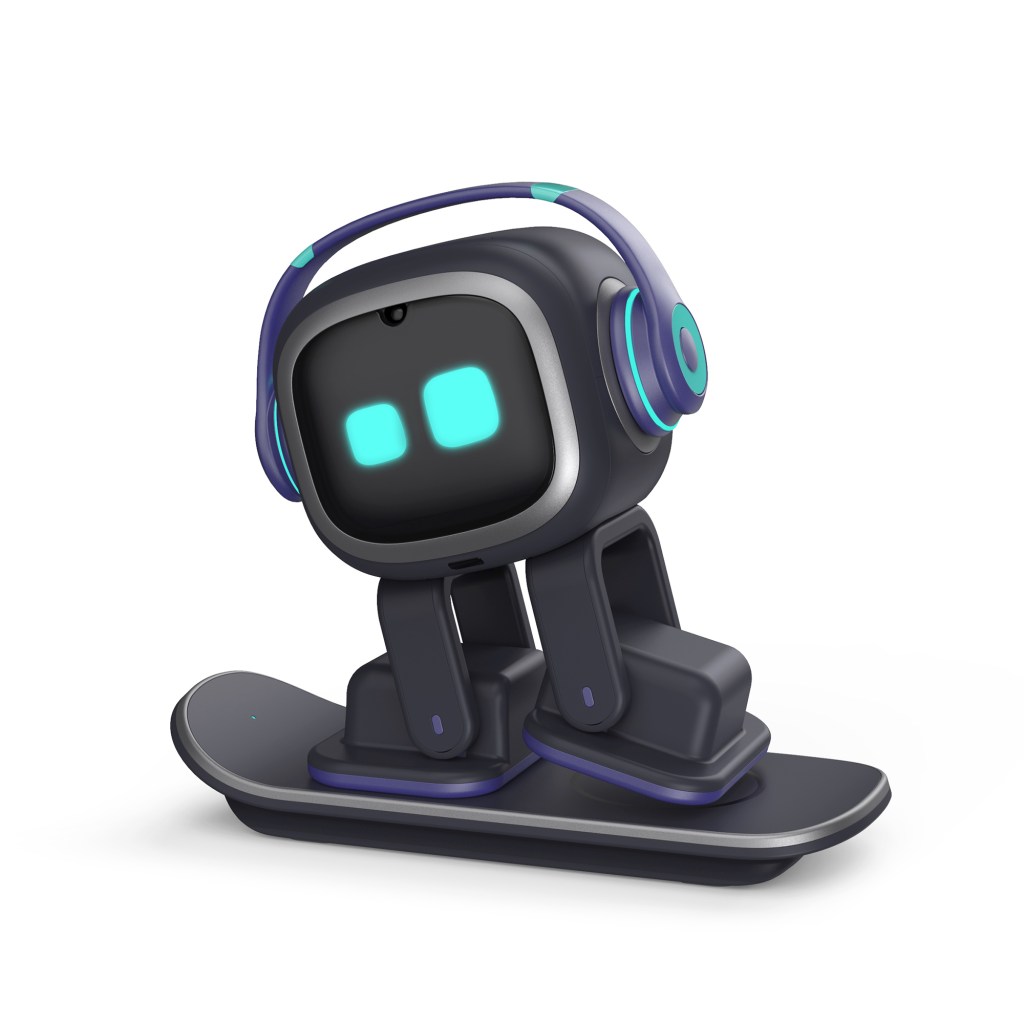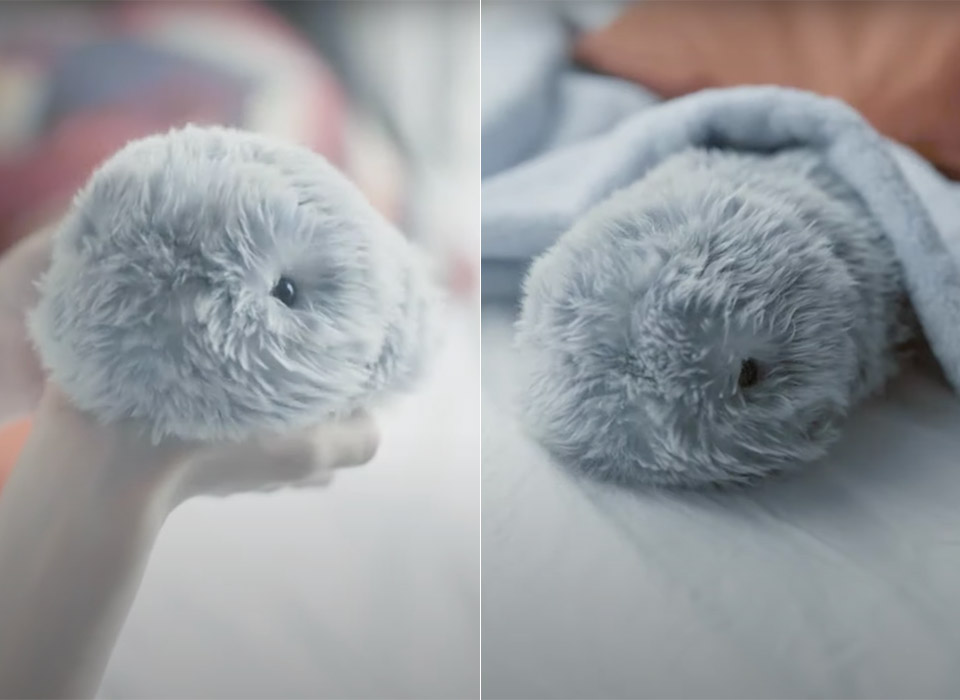
The Global Rise of Cute AI Companion Robots
Exploring the transformative impact of emotional AI companions like EMO, Moflin, and Qoobo on modern society
Key Insights
Global AI companion market projected to reach $140.75 billion by 2030
Women aged 27-35 represent the primary consumer demographic
80% of elderly users report reduced loneliness with companion robots
Enhanced emotional intelligence driving next-generation innovation
Executive Summary
The global consumer market for cute AI companion robots is rapidly expanding, fueled by technological advancements, increasing societal needs for companionship, and growing acceptance of AI in daily life. Products like EMO, Moflin, and Qoobo exemplify this dynamic market's evolution toward emotionally intelligent companionship.
Key drivers include the rising global aging population, increasing awareness of mental health issues, and continuous innovation in AI and robotics. However, challenges such as high initial costs, data privacy concerns, and the need for more sophisticated emotional intelligence remain significant barriers to widespread adoption.
Market Analysis
Current Global Market Size and Growth Trends
The global market for AI companion robots demonstrates significant and sustained growth across multiple segments. The overall AI Companion Market was valued at $28.19 billion in 2024 and is projected to reach $140.75 billion by 2030, with a remarkable CAGR of 30.8%.
Key Market Segments
Growth Drivers
- Rising aging population globally
- Increasing mental health awareness
- Smart home ecosystem integration
- Technological advancements in AI
Competitive Landscape
The market features intense competition among established technology giants, specialized AI companies, and emerging startups. Competition primarily revolves around technological differentiation, with companies heavily investing in natural language processing, emotional intelligence, and multi-modal interaction capabilities.
Technology Leaders
Specialized Companies
Healthcare Focus
Key Market Drivers and Challenges
Market Drivers
-
Addressing Social Isolation
-
Personalized User Experiences
-
Technological Advancements
Market Challenges
-
High Initial Costs
-
Data Privacy Concerns
-
Emotional Intelligence Gap
Product Research: Current and Upcoming Models
Desktop AI Pets (e.g., EMO, EMO AIR)

EMO by LivingAI
EMO is marketed as an AI desktop pet with distinct characters, designed to stay by the user's side for company, surprise, and sometimes annoyance—much like a real pet. It features a built-in Neural Network Processor and AI Models, enabling continuous processing of image, sound, and sensor data for meaningful human interactions.
Therapeutic AI Companions (e.g., Qoobo, Petit Qoobo)
Qoobo by Yukai Engineering
Qoobo is a therapeutic robot designed as a cushion with a tail. Its primary function is to provide comfort through touch-responsive tail movements. When caressed, it wags gently; when rubbed, it swings playfully—offering comforting, non-verbal communication similar to that provided by animals.
Petit Qoobo Enhancements
Petit Qoobo responds not only to touch but also to sound, featuring subtle vibration to mimic a cat's purring and a "heartbeat" that can be felt when cuddled. The company has shipped nearly 40,000 units of the Qoobo series as of early 2024.

Technical Specs
- Battery Life 8 hours
- Charging USB
- Colors Gray, Brown, Black, White
- Washable Yes (fur cover)
Animal-like AI Robots (e.g., Moflin, PARO, Lovot)
Moflin by Casio

Moflin is a collaboration between Casio and Vanguard Industries, designed to resemble a cross between a hamster and a Tribble. Unlike more active robotic pets, Moflin's primary function is to be a soothing presence, using AI to learn and adapt to its owner.
Premium Options
Emerging Models
Elephant Robotics' metaAnimal series introduced at CES 2025 includes robots like metaCat, metaDog, and metaPanda, which use advanced LLMs to learn and adapt to owners' preferences, featuring real animal behaviors like purring and wagging tails.
Comparative Analysis: Features, Technology, and Pricing
| Product | Form Factor | Key Features | Price Range | Target Audience |
|---|---|---|---|---|
| EMO | Desktop robot on skateboard |
1,000+ expressions, smart home control, voice assistant
|
$279-369 | Desk workers, general companionship |
| Qoobo | Cushion with tail |
Touch-responsive tail, therapeutic comfort
|
$100-149 | Stress relief, simple companionship |
| Moflin | Furry animal-like (hamster) |
AI personality development, evolves with interaction
|
$395-400 | Cuddly AI pet enthusiasts |
| Lovot | Penguin-like, soft body |
Advanced emotional awareness, seeks affection
|
$3000-4000 | Deep emotional bonds seekers |
| PARO | Robotic seal, soft fur |
Therapeutic, responds to touch/light/sound
|
$5000-6000 | Elderly care, dementia patients |
Consumer Behavior and Sentiment
Target Demographics
Primary Demographics
Women Aged 27-35
70% of Kickstarter backers for companion robots are women, mainly aged 27-35. This demographic seeks "emotional connection" and values the companionship these robots offer.
Single Individuals 30-40
Fast-paced professionals who may lack close companionship but have financial means to invest in AI companions as alternatives to real pets.
Children (Ages 5-10)
Educational and developmental focus with robots like Miko and Moxie designed as smart playmates and learning assistants.
Specialized Demographics
Elderly Population
Older women, particularly widowed elderly women, are primary users seeking emotional companionship and health monitoring support.
Tech Enthusiasts
Male tech enthusiasts represent 70% of early adopters for high-end robotic pets like AIBO, driven by interest in innovative technology.
Purchase Motivations and Usage Patterns
Primary Motivations
Usage Patterns
High-Engagement Users
Usage Contexts
- Home environment: Continuous companionship and smart home integration
- Office setting: Intermittent engagement throughout the workday
- Healthcare: Therapeutic support during stress or need periods
- Children: Playtime and educational activities
Consumer Reviews and Sentiment Analysis
Overall Sentiment
Consumer sentiment towards AI companion robots is generally positive, with emotions like "joy" and "love" being more prevalent than negative sentiments such as "sadness" and "fear." This trend appears consistent across different continents, suggesting broad acceptance.
Positive Experiences
Concerns & Challenges
Product-Specific Feedback
EMO Reviews
Users describe EMO as a "fun companion" and appreciate its interactive nature, including responding to touch, playing games, and various animations. Design is frequently praised as "incredibly cute" and "slick, futuristic," though some note the price point feels high for a "toy-like device."
Miko Robot Feedback
While praised for educational value, some reviews note the AI can feel "primitive" compared to newer models, and the subscription model can be a point of contention for some users.
Key Insights
Market Outlook and Future Trends
Global Market Opportunities
Key Opportunity Areas
Elderly Care
With the global aging population rapidly increasing, there is rising demand for solutions that can provide companionship, assist with daily activities, monitor health, and reduce loneliness among seniors.
Healthcare Sector
Extensive opportunities including patient support, rehabilitation, mental health therapy, and assistive devices for individuals with disabilities.
Education Sector
Interactive learning tools for children, helping develop social, emotional, and cognitive skills through play-based learning.
Regional Growth Potential
Asia-Pacific
Expected to witness the highest growth rates, driven by increasing digitalization, rising investments in AI, and growing awareness of AI companion benefits.
North America
Strong growth potential supported by technological advancements and supportive government policies.
Market Projection
Emerging Technologies and Innovations
AI & Machine Learning
Enabling robots to learn from user interactions and adapt to individual preferences for more personalized experiences.
Advanced Sensors
Sophisticated cameras, microphones, LiDAR, and touch sensors for better environmental perception and navigation.
Cloud Integration
Continuous learning and improvement through cloud-based AI platforms for data processing and updates.
Smart Home IoT
Seamless integration with smart home ecosystems for enhanced utility and convenience.
Emotional Intelligence
Development of emotional intelligence in robots for more meaningful and empathetic interactions.
Future Trends in Physical AI Companions
Enhanced Emotional Intelligence
Future robots will possess much deeper understanding of human emotions, enabling more personalized, empathetic, and contextually appropriate interactions. This involves improvements in natural language processing and computer vision to interpret subtle emotional cues.
LOOI Example
Robots like LOOI, driven by ChatGPT technology, feature vivid character traits and gestures with bionic behavior systems designed to deliver improved emotional resonance.
Practical Applications Expansion
Health Monitoring
Personalized health monitoring including medication reminders and encouraging healthy habits, especially in elderly care.
AI-Powered Therapy
Development of therapeutic applications for mental health support and wellness enhancement.
Smart Home Integration
Future AI companions will act as central hubs for controlling smart home devices, managing schedules, and providing personalized assistance, becoming more integral to daily routines.
Current Example: ElliQ
ElliQ, an AI-driven social robot, is already being used to alleviate loneliness among older adults by facilitating well-being activities and social connection.
Diverse Form Factors
The market will see greater variety of form factors and specialized functionalities, catering to diverse consumer needs:
- Desktop pets like EMO with enhanced utility
- Mobile companions with advanced mobility
- Therapeutic devices like Qoobo with expanded features
- Integration of GPT technology for enhanced conversational abilities
Conclusion and Recommendations
The global consumer market for cute AI companion robots is on a strong growth trajectory, driven by technological advancements, evolving societal needs for companionship, and increasing applications in elderly care and mental well-being. Products like EMO, Moflin, and Qoobo exemplify the diverse approaches within this market, catering to different consumer preferences for interaction, design, and functionality.
The market is characterized by significant investment, rapid innovation, and a dynamic competitive landscape featuring both established players and agile startups. While consumer sentiment is generally positive, challenges such as high initial costs, data privacy concerns, and the need for more sophisticated emotional intelligence must be addressed for sustained market expansion.
Strategic Recommendations
Enhance Emotional Intelligence
Manufacturers should continue investing in R&D to improve emotional AI, focusing on creating more genuine, empathetic, and contextually aware interactions beyond pre-programmed responses.
Address Affordability
Explore strategies to reduce production costs and offer products at various price points through modular designs, subscription models, or targeting cost-sensitive demographics.
Prioritize Data Privacy
Implement robust data protection measures, ensure transparent data usage policies, and provide users with clear control over personal information to build and maintain consumer trust.
User-Centric Design
Continuously gather user feedback and incorporate it into product development, offering extensive personalization options for appearance, personality, and functionalities.
Expand Practical Applications
While maintaining emotional support features, integrate practical functionalities like smart home control, health monitoring, and educational content to increase value proposition.
Conduct Ethical Research
Collaborate with researchers and ethicists to study long-term societal impact, ethical implications, and effects on human relationships as AI companions become more integrated into daily life.
By addressing these strategic areas, the cute AI companion robot market can continue its growth trajectory, offering increasingly valuable and meaningful interactions to consumers worldwide while navigating the complex challenges of technological advancement and societal integration.